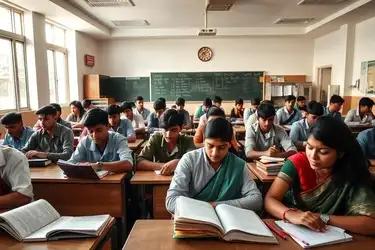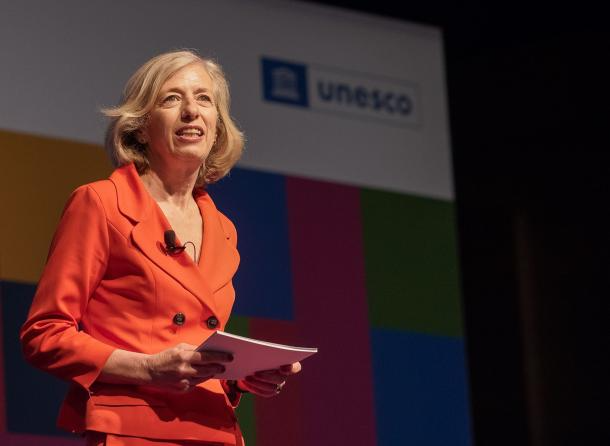
Indian students dominate Dubai campuses
Indian Students Lead a Remarkable Rise on Dubai’s University Campuses
A notable transformation is taking place across Dubai’s higher education landscape Indian students are emerging as the dominant international cohort, shaping campus life, academic priorities, and the broader inter‑cultural dynamic. Over the past decade, Dubai has strategically positioned itself as a higher education hub establishing branch campuses of global universities, launching international accreditation gateways, and connecting the Middle East with South Asia’s vast talent reservoir. The influx of Indian students reflects not only the city’s ambition to become a cosmopolitan education center but also the aspirations of Indian families seeking global exposure in a geographically proximate, financially accessible, and culturally vibrant setting.
Dubai’s appeal for Indian students operates on multiple fronts. First, the city offers a Western style education within a region that boasts a familiar sociocultural vibe. Students pursuing undergraduate and postgraduate degrees across fields such as business, engineering, digital technology, and hospitality find comfort in the availability of Indian food, numerous community networks, and cultural festivals that replicate familiar traditions. Additionally, the curricula often modeled after UK, US, or Australian universities offer internationally recognized qualifications without the high cost of tuition or living expenses associated with destinations farther afield.
Many Dubai‑based institutions actively target the Indian student market through scholarships, educational fairs across Indian metro cities, and partnerships with Indian coaching centers. According to a recent trend analysis, the majority of newly enrolled international students at universities like Amity University Dubai, Manipal Academy of Higher Education’s branch campus, and the University of Wollongong in Dubai hail from India. This popularity is in part due to job seeking aspirations; Indian students perceive Dubai as a launchpad into Middle Eastern or global job markets while remaining close to home.
This trend has reshaped the social and academic character of Dubai campuses. Indian Students’ Associations (ISAs) across universities have become the largest and most active international student communities. These groups organize everything from Holi celebrations, Diwali nights, and cricket tournaments to academic seminars, career fairs, and mentorship networks that connect senior and junior cohorts. On campus, Indian languages such as Hindi, Tamil, and Malayalam are widely spoken, while Indian student lunches have grown to dominate cafeteria menus. Some universities have even introduced courses and student support services with India centric orientations such as motivation enhancement workshops tailored to Indian academic culture.
Academically, the prominence of Indian students is influencing curriculum design and teaching methods. With many Indian students coming from exam driven educational systems, faculty members report greater demand for structured guidance, example focused teaching, and regular problem solving sessions. This has encouraged campus leaders to develop peer assisted study programs involving Indian graduate students, commercial tutoring services, and academic writing workshops directed at bridging the gap between memorization based skills and critical thinking often expected in international higher education.
The economic implications are also significant. Indian students contribute substantially to tuition revenue, housing demand, and local services spanning transport, retail markets, and private coaching centers. Real estate agents in areas like Dubai International Academic City and Dubai Knowledge Park cite student driven rental demand as a factor inflating rental prices and occupancy rates. Universities, in turn, have responded by investing in student accommodation projects and wellness centers geared toward the Indian cohort, while local businesses adapt their offerings grocery stores stocking more masalas, restaurants offering Indian breakfast buffets, and event venues featuring Indian pop performances.
However, this domination also raises questions of diversity and inclusiveness. Some educators voice concern that Indian student prevalence may inadvertently marginalize other international or Emirati students in classroom participation or social integration. Universities have responded by promoting intercultural clubs, language exchange programs, and compulsory diversity training for campus leadership. These efforts aim to preserve the cosmopolitan ethos of Dubai institutions, ensuring that students from Africa, South America, Europe, and the Gulf enjoy meaningful representation in campus life and classroom dialogue.
Despite these concerns, Indian students continue to thrive in Dubai, reporting high levels of satisfaction with their academic experience. Many credit supportive communities, rigorous curricula, and proximity to home as decisive advantages. Post study employment patterns reveal that a significant portion secure roles in finance, IT, engineering, and hospitality sectors often within Dubai’s multinational corporate ecosystem. These trends reinforce the notion that Dubai offers a hybrid education and career pathway combining international standards, regional accessibility, and financial feasibility.
Looking ahead, university strategists and education policymakers in Dubai continue to refine their Indian engagement strategies. These include initiatives to deepen India based recruitment infrastructure, forge study abroad articulation agreements with Indian universities, and create India focused internship and mentorship programs with Dubai based companies. At the same time, they are also exploring ways to balance Indian influx with broader regional representation through fee waivers, targeted scholarship programs for underrepresented nationalities, and academic initiatives that promote cross cultural research and collaborative projects.
In conclusion, the rise of Indian students as a dominant force on Dubai campuses signals a remarkable shift in global education dynamics, driven by strategic outreach, cultural familiarity, academic alignment, and regional proximity. Their ascent has enriched Dubai’s higher education ecosystem with vibrant cultural traditions, strong academic engagement, and economic vitality. Yet it also presents a balancing act universities must harness the benefits of Indian student strength while preserving an authentic multicultural ethos. As Dubai cements its position as a leading educational hub, the successful integration and diversity management of its Indian student population will be a critical determinant of its global reputation and a test case for how cities can harmonize regional demographics with international aspirations.











